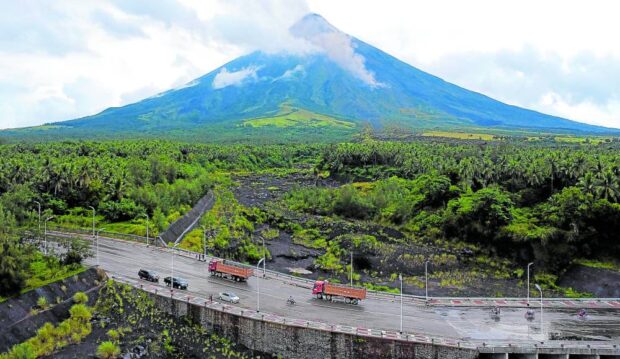
MANILA, Philippines —The state seismologist agency on Monday said that a slight increase in volcanic sulfur dioxide (SO2) emissions has been recorded at Mayon volcano.
In a bulletin from the Philippine Institute of Volcanology and Seismology (Phivolcs), the Mayon Volcano Network noted that the volcano emitted an average of 935 metric tons of SO2 on October 22, which is a slight increase from the 727 metric tons of SO2 released on October 21.
The lava flows, on the other hand, maintained their direction to about 3.4 kilometers in Bonga (southeastern), 2.8 km in Mi-isi (south), and 1.1 km in Basud (eastern) Gullies.
“Rockfalls and PDCs [pyroclastic density currents] generated by the collapse of the summit dome deposited debris still within four (4) km of the crater,” Phivolcs added.
It said 69 volcanic earthquakes, including 67 volcanic tremors that lasted from one minute to one hour and 19 minutes, and 43 rockfall events were also detected.
Alert level 3 is still raised over Mayon Volcano, which means entering the six-km radius permanent danger zone is prohibited due to possible dangers of volcanic hazards such as PDCs, lava flows, and rockfalls.
READ: LIVE UPDATES: Mayon Volcano
Meanwhile, no significant changes in volcanic activities were observed in Taal, Kanlaon, and Bulusan volcanoes.
READ: Over 200 families to remain in shelters amid lava threat from Mayon
Phivolcs said that Taal and Kanlaron volcanoes remain under alert level 1.
This indicates that volcanic earthquakes, steam or phreatic eruptions, thin ashfalls, and hazardous gas emissions may occur.
Bulusan volcano, on the other hand, is still under alert level 0, which means that generally, weak steam is being emitted and low levels of volcanic earthquakes are occurring in the area.